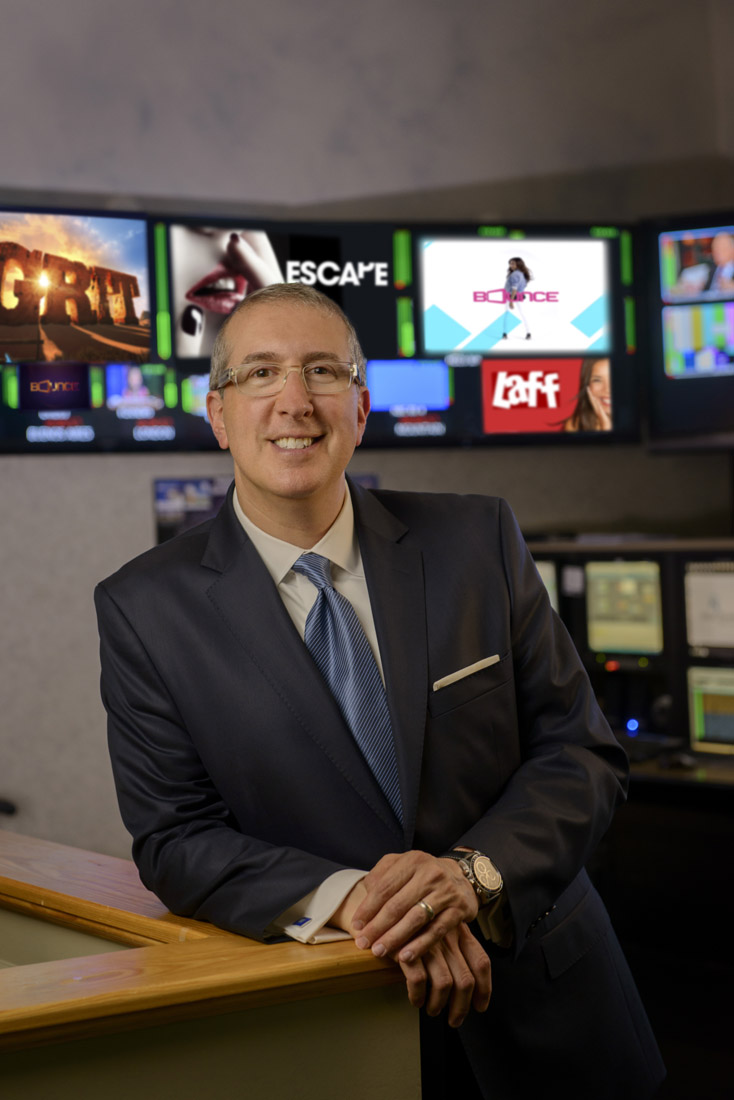Brookhaven’s Jonathan Katz creates TV the way it used to be

STORY: H.M. Cauley
If Jonathan Katz’s early years in Tuscaloosa were a sitcom, they’d be dubbed Jerry Seinfeld in Alabama. “My mom is from Chicago, my dad is from Boston and both were professors at the University of Alabama,” says the Brookhaven resident. “So I was like a young Seinfeld, except parking my Honda in a lot full of trucks with gun racks.”
Katz’s father took the family there in the late 1950s to teach about what was then cutting-edge technology: television. “I grew up holding cue cards, wearing a stopwatch around my neck and helping him out,” Katz recalls. “And we lived next door to a news anchor, so by 16, I was shooting spot news and filing spots for local stations.”
Before long, Katz was making the drive from Tuscaloosa to a bigger Birmingham station. He then held production positions at a variety of stations across the Southeast until CNN made him the head of marketing in the late 1990s. “I spent decades in programming, planning and acquisitions, buying content for Turner Entertainment,” he says. “I was also given the responsibility of creating a brand for TBS, and [the local broadcast platform] Peachtree TV came from that.” But after 35 years in the media business, Katz was ready to be his own boss. “I always wanted to be an entrepreneur,” he admits. “I had a front row seat as the business evolved, and getting connected to local TV such as Peachtree TV made me realize the value of over-the-air TV and how it was going to grow.”
Katz launched Katz Networks, a company that follows the mold of TV’s early years when programming was free and rabbit ears on top of the set were the best way to ensure a quality picture. Fortunately, the ears are gone, but the demand for free programming is not. “Antennae are much more advanced these days,” says Katz. “And TV signals, with the advent of high definition, are digital. So our company is a new category of networks created for cord-cutters: consumers who don’t subscribe to cable or satellite. They’re happy with Netflix or Hulu but still want to watch the NFL or The Big Bang Theory.”
The idea appeals both to the nostalgic and a new generation of viewers just discovering broadcast networks, says Katz. “It’s estimated that 60 million people in the U.S. now watch free TV over the air with an antenna. So, yes, there are boomers and older consumers who simply want to watch TV for free, as well as folks of all ages who have decided they don’t want to pay for cable or satellite.”
Katz Networks includes Bounce, an African-American channel featuring movies, sports and some original content; Escape, centered around programs involving investigations and mysteries; and Grit, specializing in Western and action movies and shows. Getting these stations up and running has been his biggest achievement, says Katz. “We’ve gone from bootstrap startup to becoming part of the Scripps Company last year,” he says. “I’m proud that our networks produce original content, and we have some original movies in production, too. We’ve built a library of content we own. We’re in a golden age of television, and consumers have never had so many options.”
Still, Katz recognizes the industry is likely to shift again. “Change is constant,” he says. “I remember the days of only three broadcast networks and a few UHF [ultra high frequency] channels. Now there are hundreds of cable and on-demand channels. I’ve [seen] a lot of change, and there’s no question that as consumers demand more, the marketplace will change again.”
KATZ NETWORKS
scripps.com/katz-networks
Atlanta-based writer and editor contributing to a number of local and state-wide publications. Instructor in Georgia State’s Communication department and Emory’s Continuing Education division.

















